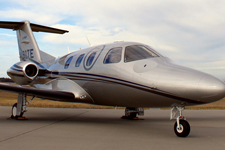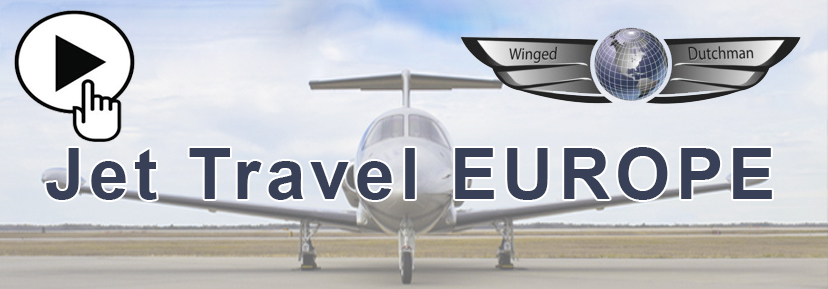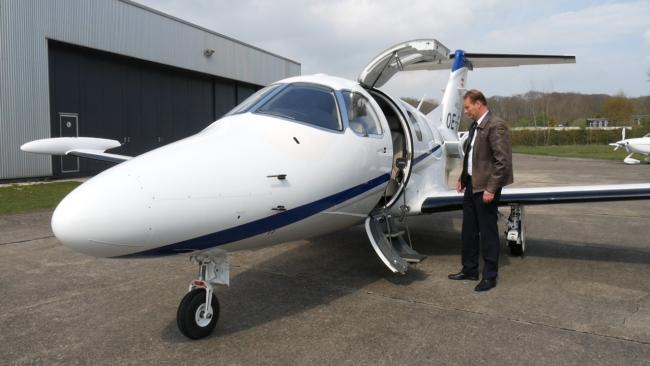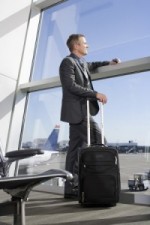
With the inevitable change of Board leadership, someone will eventually ask the question “Why do we have the aircraft?” They need to understand the aircraft is an essential business tool without which your company would be at a competitive disadvantage in today’s rapidly changing economic environment.
The tangible benefits to having an aircraft (among others) are:
Some, or all of these will apply to your situation. No one will deny the ability of the business aircraft to serve, but the question that still gets asked is: Are the benefits worth the cost?
As an example, assume a trip is needed from New York City to San Antonio. The bus fare is $219, and the travel time, 50 hours. Via the airlines, you can make the trip in 5.5 hours (plus airport time) for about an 8-hour travel day. Business airfare for last minute travel may run to $1,200 per person, or $4,800 for four persons.
On the business jet, a charter may take less than 4 hours total time and cost about $10,000 for up to six. No one will say that the bus is the “best value” way to travel, even though it is cheaper. However, many may question the value of the business aircraft. The business jet fee is eight times the airline ticket for a savings of just four hours. Yet, by evaluating the travel in greater detail, you may need an overnight stay (or two) at San Antonio versus having the ability to return late in the same day on the business jet. And there’s always the added value of privacy surrounding business matters in a business jet cabin.
In order to determine the value of the business jet over the airline, you need to understand both the total time needed for the travel and the lost opportunity cost of that travel. The business aircraft has but one master, you. It will travel on your schedule and thus, offers significant time flexibility. The airlines have set schedules in order to try and fulfill most traveler’s schedules.
While an executive is worth more than his or her salary, whether that value to a company is two times or five times greater is a subject for much discussion and controversy.
A senior executive with a high six-figure income and benefits package has to be worth at least $500 per business-hour to the firm. Business-hours spent in the office, with a client, or working somewhere quietly without disruption are more productive than business hours spent waiting at the airport. Essentially, analysis can show that the time spent not traveling can be put to productive use, and that increased productivity can offset the added cost of using the business aircraft option.

Aviation journalist Kathryn B. Creedy says linking commercial aviation hassles to business aviation could expand the market.
The No Plane, No Gain campaign seemed to give the industry all it needed to sell business aviation in a world that still thinks it is for fat cats jetting off to Gstaad. Among many other conclusions, the studies showed users are more successful than nonusers, and that government use of business aviation actually saves taxpayers money.
Even so, the understanding of business aviation remains woefully inadequate judging from the headlines that love to stick it to users. Indeed, I question whether anyone in the industry is using these valuable studies to convince chief financial officers to consider business aviation.
A gold mine
Business aviation interests are sitting on a gold mine if they just step back to consider the growing mountain of data about the economic impact of the commercial aviation hassle factor. If they did, they would accomplish what one innovative company – Wheels Up – has set out to do and that is to expand the market.
“Private aviation has been a matter of poaching each other’s customers,” Wheels Up President David Baxt told me during NBAA. “We are expanding the market, democratizing private aviation and driving new people to it.”
Business aviation veterans, however, caution that we live in a cost-conscious world. Do we? Or, are corporations just being penny wise and pound foolish and we don’t know how to convince them otherwise? Do CFOs know the statistics that bizav contributes to the bottom line? Do they know the real cost of commercial airline service? What about those who live off the transportation map?
Out of luck?
In the past two decades, more than 400 communities have lost commercial air service in the US and, astonishingly, 200 have been lost since 2013. New pilot training regulations mean the further erosion of air service – which is expected to reach crisis proportions within the next few years. That is a lot of people out of luck.
Consider this:
The out-and-back-in-one-day business trip is a thing of the past, except with business aviation. Traversing a hub to get to your destination adds three to five hours to the length of a business trip.
De-hubbing has more than halved the non-stop destinations at major airports and municipal officials are desperately looking for solutions.
Hubs are designed for inter-regional travel, leaving intra-regional flights unaddressed.
A regional airline flight is almost three times as likely to be canceled than a major airline flight. Weather and air traffic congestion conspire in the cancellation of 69% of regional jet cancellations. For major airlines, the cause relates to mechanical or crew problems.
The Department of Transportation has been searching for solutions to the loss of air service and mentioned contracting with air taxi companies as a solution.
At the beginning of the aviation industry, passengers had a saying: If you have time to spare, go by air. Today, the old adage still rings true, creating a huge opportunity for business aviation. Business travelers know they don’t have to time to mess around with inefficient travel systems. But do CFOs know that?
Teaching the C-suite – and ourselves
The industry can do more to educate the C-Suite. Potential users may wring their hands about how to eke more productivity out of employees, but they don’t think of travel productivity because they are tied to the corporate travel industry. These and other factors suggest that we should not let cost consciousness become a barrier to our education efforts.
The problem is few in the business aviation community know anything about the commercial aviation aside from what they see as a passenger. They assume that because of the higher costs of business aviation, most passengers won’t even consider it.
They are right and wrong at the same time.
They don’t know about the compelling narrative that can be created by linking the hassle factor and the ease of business aviation. Viscerally, we know about the pain of commercial airline travel, but have we quantified it? I have.
Do the math
Having spent my career covering both commercial and business aviation, I see the potential of what can be done. I’ve already written that narrative. Strikingly, the cost of delays and cancellations were more than $8.5 billion annually, with nearly one in five kept from completing their trip in 2013. Total air service problems cost the economy $85 billion and $900,000. Imagine if we could help unlock that productivity.
Today’s transportation system is just not set up for business travelers. In 2013, security, fees, crowded flights and terminals and delays and cancellations prompted passengers to eliminate 38 million domestic airline trips – 8% of travel demand.
And what of the future?
We face pre-Thanksgiving congestion at least twice a week at many airports in the next decade. Some airports are already there. These are only a handful of message points that can be used. The question is how to turn these and other statistics into something business aviation interests can use.
Do you know how? I do and this could be the result: At the top of the last business cycle, airline hassles grew business aviation from 16% of all premium business traveler trips to 41%, according to Stanford Transportation Group. At that time – 2007/8 – travelers on business aircraft generated a record 41% of the number of passenger trips as those made by airline first-class, business-class and full-fare coach passengers combined.
While travel industry studies about the cost of inefficient air transportation are designed to goose Congress into funding initiatives such as NexGen, their conclusions amount to valuable additions to the industry’s quiver in its efforts to convince the CFO. With this material, business aviation interests can make companies rethink their corporate travel policies to allow business aviation as the cost gap between business and first class as business aviation narrows and the hassle factor expands.
The time is now
Exploiting the opportunity before us will yield new customers. New business models such as Wheels Up, Surf Air and Jet Suite, are making business aviation more accessible. I think more established business aviation companies, NetJets and the like, and airports need to adopt more pro-active marketing campaigns that target those who do not use business aviation today.
Clearly, much more can be done, and it is up to the marketing and public relations officers to make a real difference. We are now heading to the top of the next business cycle.
Business travelers are looking for alternatives. The time is now.

You road warriors are a hardy bunch, aren’t you?
You spend over a hundred hours a year on planes, take trips on short notice, cross too many time zones, lose sleep, gain weight, get up way early and come home late, and give up more than your share of weekends. All while being squeezed by travel policies that leave you shaking your head, wondering if the people who approved these policies really, truly understand how hard it is to be a heavy-duty road warrior.
The Travel Friction Concept
Let’s call all this wear and tear you’re taking on “travel friction“. You get it, right? The more trips you take, the tougher those trips are, the more you get burned out by being on the road.
Fun fact: Real road warriors, those in the top 10% of all travelers, absorb close to 50% of all travel friction in the average firm. So you really are in a separate class when it comes to work-life balance challenges, and not surprisingly, for higher risk of quitting your job.
It’s this risk of attrition, of getting burned out on travel and quitting the road, that is the key to a better way of managing all you road warriors.
Old-School Procurement Is The Problem
Procurement folks must address the travel category. The spend is too big, and the purchase practices too important, for them to ignore. The old-fashioned way of procuring travel has been – and sadly, still is – to focus intensely on the travel supplier’s costs. Hammer that airfare down, demand a lower hotel rate, haggle over a buck or two a day for the rental car.
At the same time, procurement knows that travelers need to abide by travel policies that further reduce travel supplier costs. Things like taking extra connections, flying 12 hours in coach, or staying at inconvenient 3-star hotels…all the things that you road warriors really hate. Procurement has been doing it this way for twenty years. Call this the “transaction cost” model of managing travel.
New-School Procurement Is the Solution
All we have to do is get procurement to look at the total cost of travel, not just the supplier’s portion. Specifically, the cost of travel friction. These travel friction costs come in a few forms: lost productivity, higher health costs, more safety incidents, and the killer – higher turnover.
The good news is that these travel friction costs can all be quantified. The better news is that procurement folks already get the “total cost” concept. They use it all the time in other cost categories. Think computers or cars, and their total cost of ownership.
More Than Just Tiered Travel Policies
Many companies give their frequent travelers a more traveler-friendly policy. Maybe you get business class on long haul flights and an airport lounge membership. Woo-hoo. There are many other ways for your firm to reduce the amount of travel friction you take on. Consider these options:
Road warriors are a very valuable segment of any firm’s workforce. It’s well worth reducing the friction in this important part of the business machine.

The idea of flying on a private jet charter sounds far-fetched to many people. Many believe it is an option that is only accessible to extremely wealthy individuals or large corporations. In reality, though, that is not entirely accurate. Here are five widely held myths about private aviation, some of which might surprise you.

Actually, a majority of private jet charters are for business us. Private jet charters allow greater flexibility when traveling for business and provide service to hundreds of airports that commercial airlines do not have access to. This places employees on the ground closer to where they need to be. As a result, this generates savings in ground transportation and quite often in accommodation fees as well. It also enables employees to bypass agonizing long airport lines, economizing businesses and its employees in terms of time, stress, and money.
Commercial airports require long lines and extensive security measures for a much larger group of people. This process is time consuming and cumbersome for travelers. Smaller regional airports, on the other hand, serve smaller groups of people throughout the day, are located more conveniently throughout the country, and provide more central access to smaller locales where you conduct business.

Lelystad Airport
Groningen Airport
Teuge Airport
Amsterdam Airport
Schiphol
By the numbers, though, there are approximately 450 large commercial airports in 50 U.S. states. That leaves a lot of territory not served by commercial airliners. By contrast, there are more than 3,000 general aviation facilities throughout the U.S. available for private jet traffic. This is also true for Europe.
Private jet charter pricing is transparent and easy to understand. In fact, it is just as easy, if not easier, than booking an airline ticket on a commercial flight. The underlying types of costs on a private jet charter flight are the same – such as aircraft cost per hour, crew salaries, passenger taxes, and airport landing fees.
Businesses or individuals chartering jets know the total cost upfront, unlike some commercial airlines that may charge disguised fees for checked bags, overweight bags, carry-on bags, set preference fees, ticket exchange fees, blanket fees, in-flight food fees, and more.

Eclipse 550 Lelystad Airport zakenvluchten Noord Oost Nederland
Private aviation is regulated by stringent FAA and EASA safety standards, just as commercial flying is. In practice, FAA and EASA regulations and inspections, which include regularly scheduled inspections and surprise inspections, carefully monitor the operation of private jet charters. Not only does the FAA and EASA tabulate safety inspection scores, but outside inspection firms, such as Wyvern, do too. These private chartered flights scores include everything from plane maintenance to pilot training, to pilot flight experience and procedures for flying.
Cost is the bottom line concern of most businesses. The costs of executive private jet charters are comparable, in many instances, to first class flight tickets per person with the benefit of the time saving process of leaving on your timetable with the ability to drive almost right up to the jet for boarding, rather than going through prolonged security checkpoints at the airport.
Private planes can generally fly directly to the location where you need to conduct business. This saves time and money for employees as car rentals can often be bypassed. More importantly, though, your team can continue working, in private, throughout the flight on private jets, something that’s simply impossible to do on commercial airlines. This makes the travel time itself productive. Empty legs flights, which are return “legs” of flights where passengers only chartered a one-way passage, are another way to save money on a executive jet charter.
Now that these myths have been debunked, it’s time to explore the many reasons why private jet charters may be the perfect solution for your business travel needs.